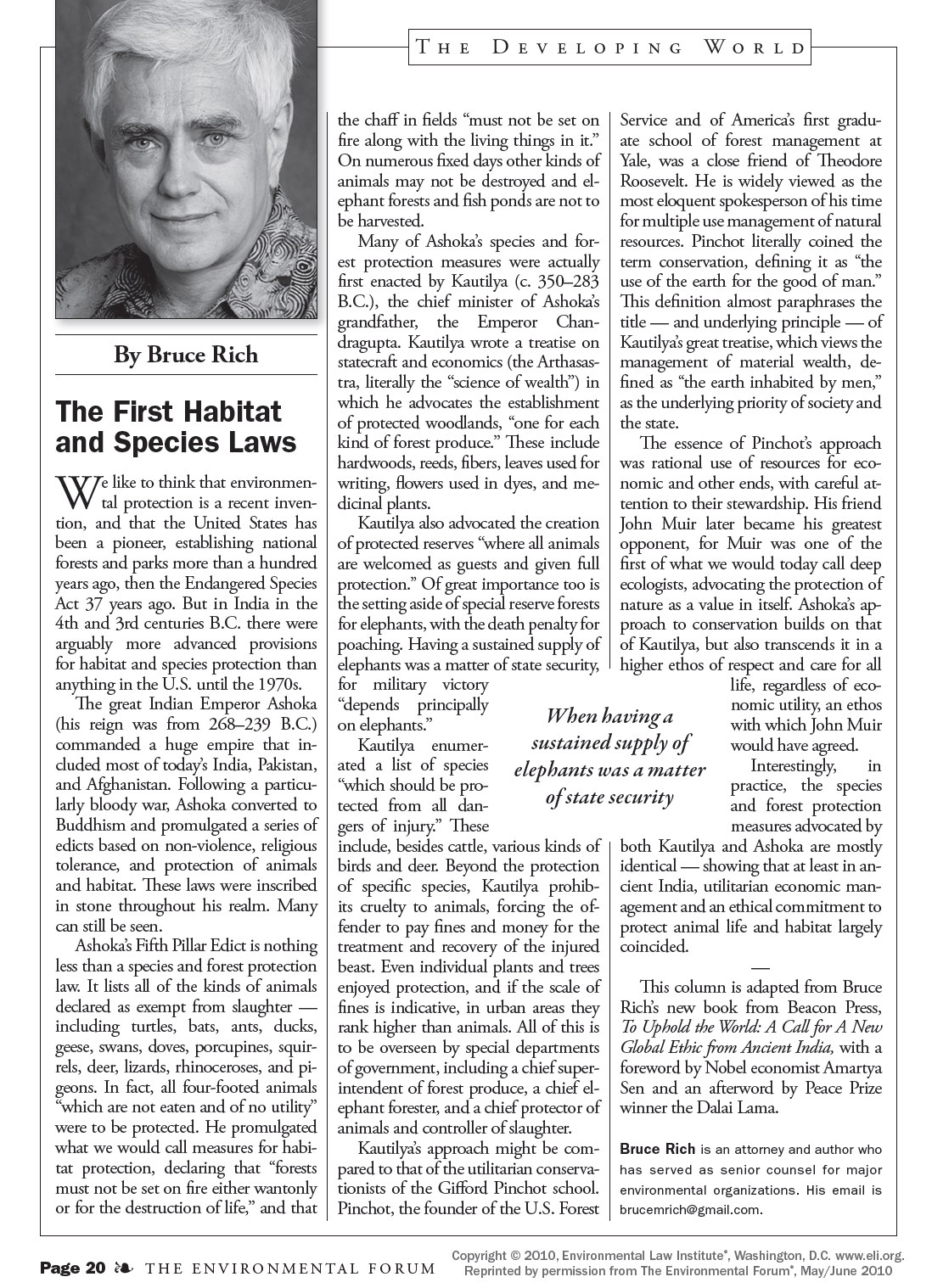- Bruce Rich
- Environmental Forum
- May-June, 2010
- p. 20
We like to think that environmental protection is a recent invention, and that the United States has been a pioneer, establishing national forests and parks more than a hundred years ago, and the Endangered Species Act 37 years ago. But in India in the 4th and 3rd centuries B.C. there were arguably more advanced provisions for habitat and species protection than anything in the U.S. until the 1970s. The great Indian Emperor Ashoka (his reign was from 268–239 B.C.) commanded a huge empire that included most of today’s India, Pakistan, and Afghanistan. Ashoka converted to Buddhism and promulgated a series of edicts based on non-violence, religious tolerance, and protection of animals and habitat. These laws were inscribed in stone throughout his realm....Many of Ashoka’s species and forest protection measures were actually first enacted by Kautilya (c. 350–283 B.C.), the chief minister of Ashoka’s grandfather, the Emperor Chandragupta. Kautilya wrote a treatise on statecraft and economics (the Arthasastra, literally the “science of wealth”) in which he advocates the establishment of protected woodlands, “one for each kind of forest produce...” Kautilya also advocated the creation of protected reserves “where all animals are welcomed as guests and given full protection.”



